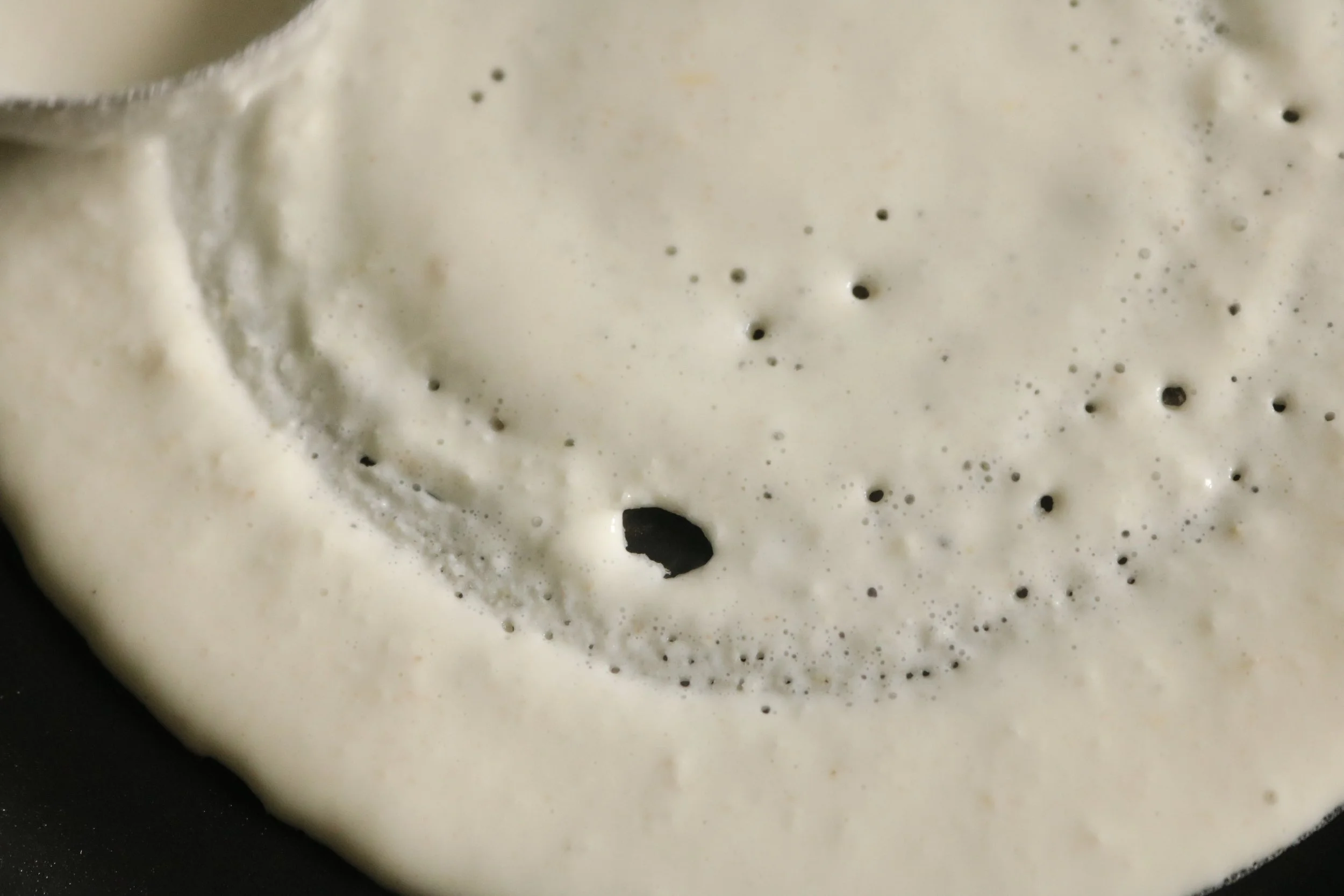DOSA
A multi-day preparation, consisting of minimal ingredients but many processes: soaking, washing, soaking again, grinding, resting, grinding again- I don’t even know the half of it I’m sure. I find this with many dishes from the south of India, the cuisine I’ve eaten most in my life. I don’t know how to prepare the batter. I’m scared that my mother and grandmother will pass away before I learn, and I’ll never be able to recreate the flavour profiles of my childhood, feel the warmth of different textures combine inside my mouth and know that I am taken care of. My mother doesn’t like cooking- she would eat simple vegetable-heavy food all the time if she could, and when I first moved out she did. She was alone, so would make an enormous pot of dahl that included her vegetable intake for the week, an enormous pot of rice and often not bother with side dishes. And she was content- but it made me so sad, because I know she’s an incredible cook. Every time I come home she asks me what I want to eat in advance, and every time she delivers- only because I’m there. Such extensive lengths are never normally taken, but they occur because I love them.
Once the batter is ready, the salt levels have been guesstimated and it’s almost time for lunch- the stove goes on. High heat, until my mum’s hand hovering over the pan determines when it’s hot enough. In quick succession, a ladle and a half is poured onto the pan, the bottom of the ladle spreading the batter out swiftly, a well-practised move passed down for centuries. Holes start to appear. It’s hypnotising to watch. Sometimes a bigger hole is created, each one slightly different - no two the same. A few drops of oil are strategically placed on the edges of the dosa and in the holes. They crackle at the contact, fat and water and rice combining. Seconds pass. Expertise and colour defines when to flip the dosa, exposing a golden and toasted side while the other side sticks and unsticks when cooks through. The science is fascinating, and hard to describe.
Dosa is then served fresh, meaning my mum stands and prepares them one after another, hounding us when we haven’t finished in time because ‘the next one is already ready!’ Enjoyed with potatoes, chutney, or chutney pudi and oil- a mixture of the three is ideal, allowing a perfect harmony to be created as an orchestra sings from your tastebuds. My mother stands, watching us eat from the stove, making sure the food is enjoyed and sometimes enjoying the odd dosa, not letting herself rest until our bellies are satiated beyond compare.
Consumption Method
Try the first mini dosa your mum made to test the salt levels. Tell her it needs more salt, but she’s already put the first dosa on the stove so accept it will be a little underseasoned.
As it finishes cooking, load your plate up- potatoes first, then the chutneys. The sambar is in a little bowl.
Ask your mum for chutney pudi and oil, be semi-frustrated when she says no because ‘it’s too much oil’. Know you’ll enjoy the last few with it.
Fresh dosa is loaded onto your plate straight from the pan, expertly slid onto your plate by your mum- she knows you don’t like it when it touches the other food because it makes it soggy
Answer your mum when she asks if you want a crispy or a soft one next
Tear off your first piece, blowing on your fingers when it is inevitably too hot.
Create a U-shaped cup out of the dosa, scooping up chunks of potato and dipping them in the chutney
Feed yourself your creation, making sure to exclaim how good the food is to your mum and whoever else made the food- emphasise it, use different adjectives so they know you really mean it.
Mix and match your dosa and the sides- sambar and potatoes, chutney and sambar, potatoes and chutney pudi, just chutney- the opportunities are endless.
Get told off when you haven’t finished it fast enough because the next one is already ready- they take around 2 minutes to make, so this expectation was doomed to fail from the start.
Die happy.
